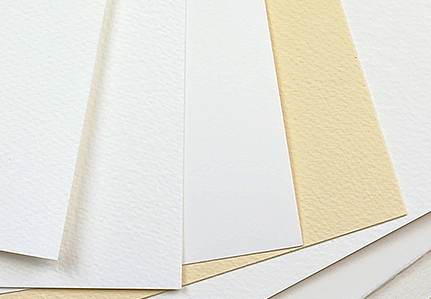Choosing the correct paper to ‘print-your-own’ album pages can be challenging and is not as simple as buying the discounted ‘acid free’ offerings at your local office supply outlet. Some collectors might be lured into thinking that ‘print-your-pages’ represents a cost savings by using inexpensive ‘acid free’ paper but there is no product more of a ‘commodity’ than paper; you get what you pay for with paper.
First, let’s dispel all the marketing puffery surrounding ‘acid free paper’. Virtually all paper manufacturers now tout their paper as acid free; unfortunately this is virtually meaningless and only serves to fool consumers. So if you go to the local office supply store and buy consumer quality paper that is marked ‘acid free’ there is absolutely no guarantee that the paper will not become acidic in the future. It can tone, become brittle, and leech acid to your stamps and covers at any time. This is because the term ‘acid free’ is defined as paper with a pH of 7.0 or greater when manufactured but having a neutral pH when manufactured does not ensure that the paper will remain neutral over time.
Any paper will become acidic over time if it is manufactured with new or recycled wood pulp. The acidification process in paper occurs when lignin is present. Lignin is an organic substance that binds cells and fibers in wood and is a source of acid. Adding buffer to the wood pulp during manufacturing will raise the pH to neutral for a short period of time but as the lignin breaks down the acid will return.
Also be aware that paper manufacturers often add a slew of other various ‘additives’ including coatings for use with home printers. Optical brighteners, residual chlorine from bleaching operations, or aluminum sulfate (alum) from sizing can lead to the formation of hydrochloric or sulfuric acid as the paper ages.
In summary, buying paper that is marked ‘acid free’ is not going to protect your stamps and covers year after year. And using ‘acid free’ paper inserted inside a sheet protector is almost guaranteeing that you are developing an enclosed acidic environment that will adversely affect your stamps and covers.
This obviously begs the question of which paper should be used for housing our precious material. Quality paper is typically called ‘archival’ but this too is a loosely applied marketing term. So you have to dig to find and understand the paper manufacturing specifications (often not published) before you purchase. The specifications for true archival paper are;
This quality paper is costly, the costs for 8-1/2 x 11 paper can range from 15-18 cents per page. Compared to the typical 1-2 cents for the inexpensive ‘acid free’ paper found at your local office supply store and you can see why some folks gravitate towards the lower quality paper. But this is false economy if you care about being a good steward of the material that you currently own.
And we cannot have this discussion without mentioning the importance of proper storage. It is paramount to store albums and stamps in environmentally controlled areas. Heat and moisture accelerate the chemical reactions that cause paper to deteriorate, and high moisture levels can result in mold growth. A cool, dry and stable storage environment is paramount; temperatures should be held at a constant 70°F with a relative humidity held between 30% and 50%.
So ‘printing-your-own’ album pages has many pitfalls that can easily lead collectors into trouble. The attraction of ‘saving money’ on paper quality is a trap which will a collector will later deeply regret when they find they stamp and covers destroyed. Even if the collector monitors and stores their albums carefully today we have no control over this after we pass them on to other people.
But ‘printing-your-own’ album pages has many advantages including allowing you to assemble a beautiful, custom heirloom that will last generations. Also note that the existing major album manufacturers often do not publish their paper specifications. My fear is that as they struggle to transition into the digital age the seduction of reducing the cost of the paper is significant. So ‘printing-your-own’ album pages gives you the most control over the quality of your stamp album(s).






